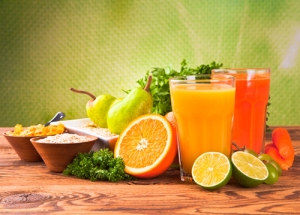Our last issue of our Health Science News Page focused on polyphenols, which are the nutrient compounds present in various plants that help in protecting plants from insects, diseases, pollutants, and damage from ultraviolet rays. In Part 1 we discussed a few of the important and most researched polyphenols - specifically quercetin, curcumin, green tea extract, and resveratrol - and their actions and functions in the human body.
Phytonutrients are natural components of plants with important functions such as protecting plants from insects, diseases, draught, ultraviolet rays, and pollutants. The best known phytonutrients are the polyphenols, carotenoids, flavonoids, catechins, and isoflavones. There are various sub-classifications of phytonutrients which include ligans, phenolic acids, and indoles. Flavones are present in vegetables such as parsley and celery, and flavolones are present in tomatoes and other citrus fruits. Catechins are present in fruits, red wine, green tea and chocolate. Ligans are found in various legumes, cereals, grains, and flax seed. In addition to protecting plants against various pathogenic organisms and ultraviolet rays, polyphenols also act as antioxidant and anti-inflammatory agents.

